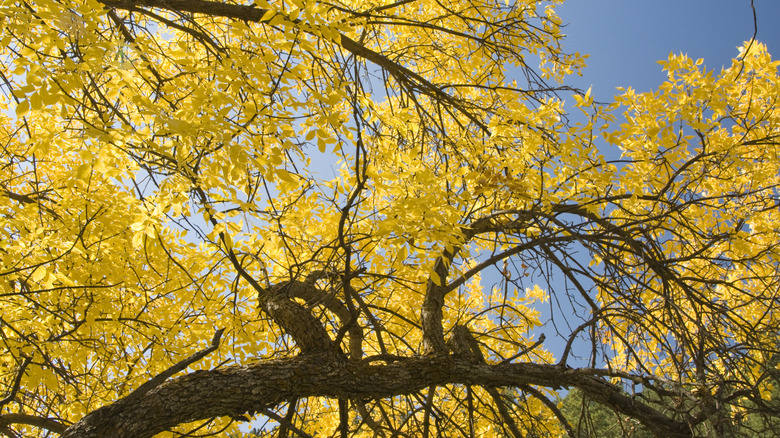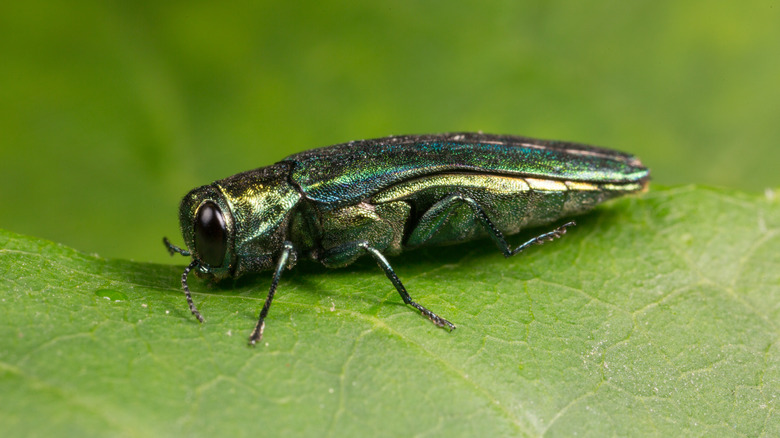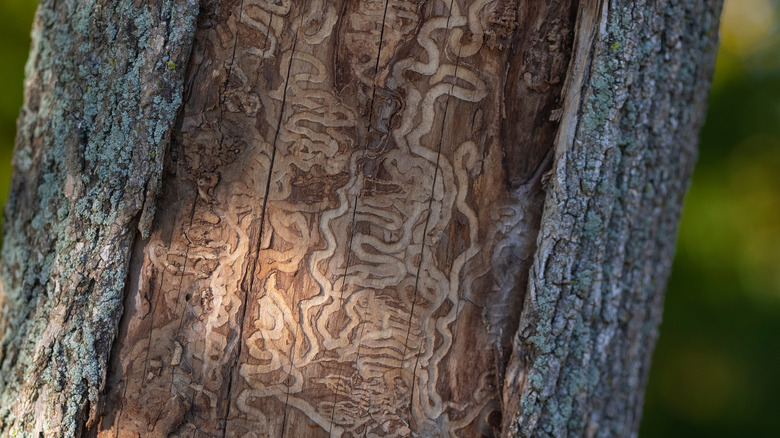The Destructive Pest South Dakota Is Seeing A Huge Increase Of (& What To Do About It)
If you've lived in South Dakota within the last decade, hearing the name of one particular pest likely makes your heart drop: the emerald ash borer (Agrilus planipennis). On June 10, 2025, the South Dakota Department of Agriculture and Natural Resources (DANR) announced that the borer was found in Milbank, which is located in the northeastern region of the state. This means the borer has now been confirmed in a total of 13 communities, with other affected cities including Brookings, Sioux Falls, Tea, Dakota Dunes, Lennox, Baltic, Brandon, Worthing, Canton, Hartford, Crooks, and Humboldt. The discovery of emerald ash borer, or EAB, in Milbank undoubtedly has added more stress to property owners around the state, with awareness of the huge increase and prevention paramount to helping stop further spread of this destructive pest.
While the invasive species was first found in the U.S. in 2002 in southeast Michigan, the presence of EAB in South Dakota wasn't officially confirmed until 2018. However, it's likely that EAB was already in North America in the early 1990s, where it quickly spread undetected for several years. Since the borer has made its way to the Mount Rushmore State, it has inflicted serious damage on ash trees (Fraxinus americana) throughout the region. The announcement from the South Dakota DANR regarding additional confirmed sightings of EAB is not welcome news, so it is important that you follow local laws and recommendations to help prevent further spread of this invasive insect.
What makes emerald ash borer so dangerous
Overall, EAB is thought to be the most devastating invasive forest insect in North America. While native to northeast Asia, EAB likely made its way to the U.S. in shipping containers. Since then, the species has targeted ash trees to lay their eggs. After EAB eggs hatch, the larvae feed off the bark and gradually destroy the affected tree. An infected ash tree can no longer transport essential nutrients, which causes it to gradually decline within three to five years. To date, the National Park Service estimates that EAB has killed tens of millions of U.S. ash trees over the last two decades. It's a growing problem in South Dakota, as well as beyond state lines. In fact, in March 2025, the U.S. Department of Agriculture (USDA) reported that EAB is currently present in 37 states, as well as the District of Columbia.
Aside from possibly seeing the metallic-green adult beetles on an ash tree, there are other key signs of a possible EAB infestation to look out for. These can include cream-colored larvae around the bark of the tree, which may be 1 ½ inches long. You might also see larvae-made holes in the trunk of the tree that can be shaped like either the letter "S" or "D." Bark splitting, increased woodpecker activity, and thinning tree canopy are other possible signs of emerald ash borer damage on trees. Unfortunately, seeing visible signs of EAB infestation could mean the ash tree has already suffered significant damage. At this point, these may be signs you need to call a tree service or an arborist.
What you can do to help prevent emerald ash borer damage
While the damage caused by EAB can quickly cause devastation to ash trees, there are some steps you can take to protect them against the growing pest population in South Dakota. For starters, preventive practices are key. As of June 2025, the South Dakota DANR expanded a plant pest quarantine to an additional county. This law makes it illegal to transport commercial and personal hardwood-based firewood outside of the designated counties, as well as any other ash materials. These include Brookings, Grant, Lincoln, Minnehaha, Turner, and Union counties. These same restrictions are in place in surrounding states on South Dakota's eastern border. The hope is that these restrictions can help prevent further EAB spread throughout the region, but it's also reasonable to assume that more South Dakota counties might be added to the list if needed.
Aside from preventing cross-county firewood transport, you can take additional steps to prevent invasive emerald ash borers from destroying your trees. If you live within the currently affected counties, or are within 15 miles of them, consider applying insecticides to your ash trees. Doing so can kill any possible larvae that might be in your trees before they have a chance to hatch. These chemicals are best applied by a professional, so you may need to contact a local tree specialist for help. Annual treatments may be added to surrounding soil, or even injected into the bark of the ash tree. Also, due to EAB problems, experts advise against planting new ash trees more generally.


